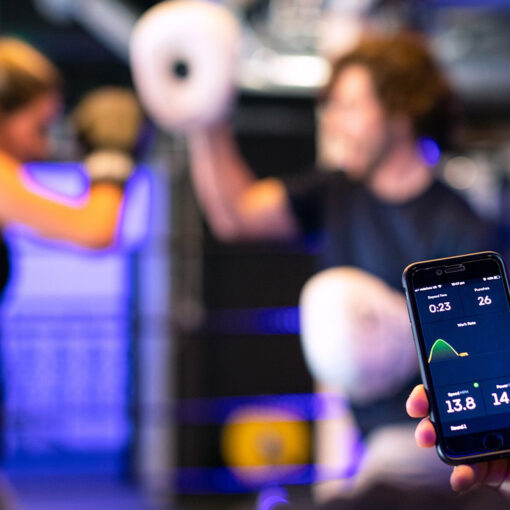There are ongoing discussions in Finland on how generic quality and effectiveness information produced by citizens should be harmonized and systematically used in national quality registers (THL 2022). The proposed primary generic quality of life metric for adults and older adults is EQ-5D-5L (Euroquol 2023), which has several gaps in fundamental areas of well-being and health, e.g. interpersonal relations, nutrition, physical activity, memory, drugs, etc. To complement the gaps above, the Finnish Institute for Health and Welfare has published a database of validated QoL metrics (THL 2023). There are several aspects to be considered before taking life quality self-assessment metrics into practice.
Defining the concept of QoL
In statistics, there is a concept of operationalization, which means turning abstract concepts into measurable observations (TUNI 2008). From the operationalization point of view, it is crucial how the concept of QoL is defined. QoL in its broad definition can be defined as the entity consisting of subjective aspects of well-being and health, e.g. physical, mental, social, cognitive, economic, and cultural (NIH 2023).

It is important to define the quality of life and well-being as broadly as possible because no attention is paid to the dimensions and perspectives that are excluded from the definition and thus, cannot be measured. Non-existing data cannot be utilized to explain the phenomenon with different multivariable methods no matter how skilled the analyst is.
Defining the purpose of generic QoL metrics
If the purpose is to collect QoL data in general, a single metric consisting of a concise number of variables might be good for the purpose, e.g. in Sweden Rand 36 and EQ-5D are broadly in use (Lääkärilehti 2020).
However, a single metric is poorly suited for use in multi-professional processes, e.g. in maternity clinics, student care, adult, and age clinics, mainly because the content is too narrow and does not cover the data needs of the respective processes or the dimensions of well-being and health. To tackle the challenge, it is possible to define a generic entity from the different metrics that cover all the essential areas of health and well-being.
Selecting generic QoL metrics
Since there are already numerous validated self-assessment metrics for different dimensions of health and well-being, the development of new metrics is not recommended. One of the perspectives on selecting metrics is that they can be used on different levels (e.g. individual, professional, organizational, regional, national, etc.).
Enabling knowledge management
High-usability human-centered digital solutions are necessary for refining the data, presenting, and sharing the information for different stakeholders. Individuals can utilize the data, e.g. for lifestyle management, professionals in first-stage customer guidance, organizations (welfare counties) in proactive resource allocation within the region, etc.
Generic QoL metrics can also bring added value for knowledge management when complementary data is brought together from various data sources. QoL metrics data combined with diagnosis, services, interventions, and costs, for instance, enable proactive decision-making based on multi-dimensional data in the identified customer segments.
Author
Niko Lankinen works as a chief specialist in health and well-being service innovations at LAB University of Applied Sciences.
References
Euroquol. 2023. EQ-5D-5L. Cited 14 Jun 2023. Available at https://euroqol.org/eq-5d-instruments/eq-5d-5l-about/
Jordan, B. 2020. Scrabble, scrabble pieces, lettering, letters. Unsplash. Cited 8 Jun 2023. Available at https://unsplash.com/photos/NzwH1CDlhB4
Lääkärilehti. 2020. Geneerinen elämänlaadun mittari kansallisessa laaturekisterissä. Cited 8 Jun 2023. Available at https://www.laakarilehti.fi/tyossa/geneerinen-elaman-laadun-mittari-kansallisissa-laaturekistereissa?public=5b2cc89ec0b768e891bdbab780ab2349
National Library of Medicine (NIH). 2023. Quality of Life. Cited 8 Jun 2023. Available at https://www.ncbi.nlm.nih.gov/books/NBK536962/
Tampereen korkeakouluyhteisö (TUNI). 2008. Menetelmätietovaranto. Cited 8 Jun 2023. Available at https://www.fsd.tuni.fi/menetelmaopetus/mittaaminen/luotettavuus.html
THL. 2022. Kansalliset laaturekisterit saavat yhteisen vointimittarin – PROM-mittarilla potilas voin arvioida omaa terveydentilaansa ja toimintakykyään. Terveyden ja hyvinvoinnin laitos. Finnish Institute for Health and Welfare. Cited 8 Jun 2023. Available at https://thl.fi/fi/-/kansalliset-laaturekisterit-saavat-yhteisen-vointimittarin-prom-mittarilla-potilas-voi-arvioida-omaa-terveydentilaansa-ja-toimintakykyaan
THL. 2023. Toimia-tietokanta. Terveyden ja hyvinvoinnin laitos. Finnish Institute for Health and Welfare. Cited 8 Jun 2023. Available at https://thl.fi/fi/web/toimintakyky/etusivu/toimia-tietokanta




